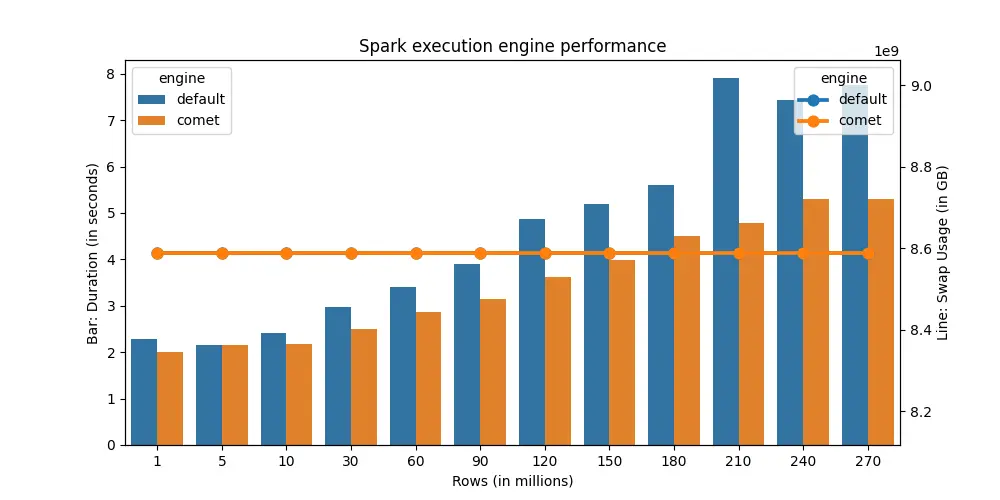Faster spark workloads with Comet
For big data processing, spark is still king. Over the years, many improvements have been made to improve spark performance. Databricks themselves created photon, a spark engine that can accelerate spark queries, but this is proprietary to Databricks.
Other alternatives do exist (see here for more details), but they are not trivial to setup.
But if you use Apache Arrow DataFusion Comet, surprisingly it does not take much time at all to setup. Comet stands on arrow, a data format growing in popularity.
For a start, you would need to compile a jar (you need rust and maven), and good news is comet also supports spark 3.4 (as of 2024-04-07).
Then it's the usual: add a jar to spark jars path, and configure spark session to use comet:
=
Result
For a simple group by query, using comet results in 30% faster execution time on average. At most, it can be up to 64% faster. 
Remarks
However, if you look at comet architecture diagram: 
This means that for certain operations, comet fallbacks to JVM for execution. If I update the benchmark query to perform window and join, the performance gain from comet is negligible.
Comet is still in its early stages, but if your workloads is query-only (ie no window or join - transformations) comet should significantly reduce your workloads runtime.